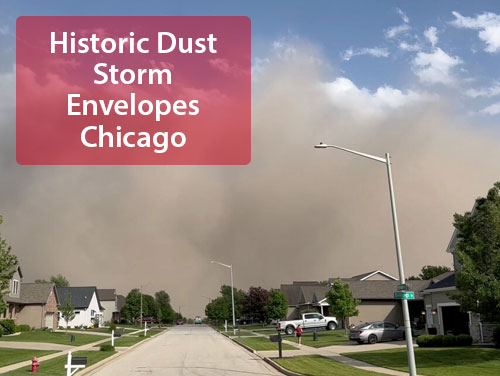
“These are man-made ecological disasters, driven by a form of agriculture that exploits and depletes the land, leaving millions of acres of soil exposed and eroding for half the year. We can’t keep farming this way.” – Robert Hirschfield, Director of Water Policy at Prairie Rivers Network.
Chicago’s dust storm was complex, and worse than you thought
A massive wall of dust and dirt particles enshrouded the city of Chicago in mid-May, causing ground stops at O’Hare and Midway and bringing the region of 10 million residents to a halt. Driven by 60 MPH winds, the violent storm brought near-zero visibility to highways and wrecked crops and agricultural infrastructure.
While the global warming related implications of this event are obvious, there are other consequences, specifically, the toxic chemicals that comprised the storm-driven particles. As with most climate driven disasters, this one is also a reflection of the unsustainable practices of human industrial agriculture. The “dust” that showered down on the city contains heavy doses of lead and other toxic farm chemicals, including pesticides.
ONGOING CROP DAMAGE / MORE HERBICIDE IN THE SOIL
While the effects in the big city got most of the press, the petite haboob was bad news for downstate soy and corn farmers, as millions of tons of chemical doused topsoil ended up in Lake Michigan. These businesses will now be re-applying fertilizer and weed killer (Roundup) to their damaged fields, compounding the ecological suicide at the heart of industrial agribusiness.
Strictly in terms of weather, this is a highly unusual event for the Midwest…but “highly unusual” is rapidly losing its meaning.